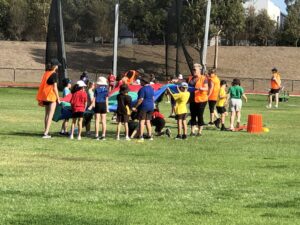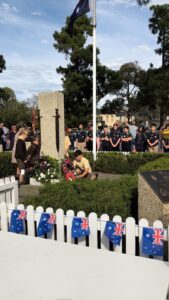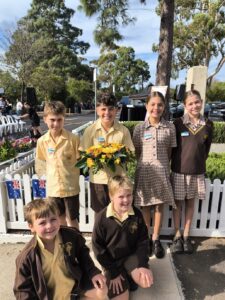Student Leaders Report
It’s been a great start to term 2 and everybody has settled in well. There is still so much more to come this term and we are very excited for it. But this is just a snapshot of what has happened so far.
Athletics day


Last week we had our school athletics day for 2025. The four houses all did really well. It was a really fun and exciting day. Thank you to Ms Tadic for organising this day and to all the other staff and parents for their support. Congratulations MARIST!
Click on the link below to see more images of the athletics carnival.
Footy Gala Day
On Monday some of the year ⅚ students went to green gully to play at the footy gala day. They all showed great sportsmanship and respect to all the other teams and all of them had a really fun time. Has a bonus the footy team won all of their games and have moved on to the next round.
Anzac Day


On Anzac Day the school leaders went to the Anzac Day memorial at Keilor village. We placed the wreath down at the cenotaph. It was an important time to respect the people who sacrificed their lives for us.
Last Friday Ms Carland , our student leaders and a number of other students attended a lovely ceremony for ANZAC Day in Keilor. The organisers were very grateful for our school’s involvement and would love to continue the relationship for years to come! We also got a mention in the local paper (link below):
Mila & Karlo
Student Leaders
Term 2 Curriculum Overviews
Click on the year links below to see what each year level is focusing on this term.
Staff Professional Learning
Monday’s staff professional learning day was designed in response to our school wide data and aimed to further teachers’ content knowledge in literacy learning, particularly text structure and sentence structure in writing. Our presenter Dr Misty Adoniou modelled lessons that provide a high challenge, high support environment where particular attention was paid to teaching knowledge about language in the context of well-written literature. Teachers worked with Dr Misty Adoniou to construct a sequence of narrative and non-narrative writing lessons which they will apply in their classroom.The aim was not only to enhance our students skills in their craft of writing but to also ensure the thrill of writing remains.



